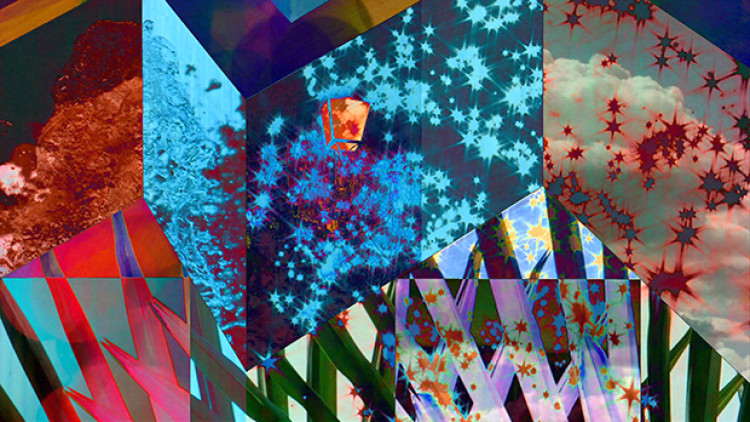event
Tell me the story of all these things. Beginning wherever you wish, tell even us.
curated by Mélanie Bouteloup and Victorine Grataloup
Sojung Jun, The Twelve Rooms, 2014, 7’35”, vidéo, son, couleur, HD. Courtesy : Sojung Jun.
With : Katinka Bock, Vittorio Cavallini, León Ferrari, Theresa Hak Kyung Cha, Sojung Jun, Rose Lowder, Huda Lutfi, Ernesto Oroza, Somnath Mukherjee, Remzi Rasa and Lyno Vuth.
Tell me the story of all these things. Beginning wherever you wish, tell even us. is the inaugural exhibition of the Autohistorias program, unfolding in 2017 across Bétonsalon and Villa Vassilieff. The exhibition borrows its title from Dictée, an experimental autobiographical novel written by Theresa Hak Kyung Cha in 1982.In this text, the Korean artist evoked her experience of exile. She used different languages, combining text and image in a variety of narrative registers, telling the story of women associated with the Nine Muses of Greek mythology. Tell me the story of all these things revolves around Sojung Jun, Pernod Ricard Fellow in residence at Villa Vassilieff. Using Dictée as an important resource for inspiration, the exhibition echoes this entanglement of individual narratives of circulation and migration. Addressing issues of displacement, it questions thresholds between inside and outside, distance and proximity, and interrogates feelings associated with multiple identities.
The exhibition starts in a nook on Villa Vassilieff’s ground floor: videos by Sojung Jun, drawing micro-narratives of marginal individuals and threatened local traditions, are presented along a selection of works by experimental filmmaker Rose Lowder. These films alternate between experiments on the film roll itself, colorful and graphic play-on-shapes, and slighty more documentary observations on the passing of time.
Rose Lowder and Sojung Jun both use textual elements in the composition of their moving images, ranging from simple letters used as graphic elements to literary quotations. The exhibition extends and propagates this work of intertextual weaving on the first floor of the Villa, especially through Bétonsalon’s singular artwork-library. In 2009, Katinka Bock had disseminated a hundred hand-molded bricks near the art center, which visitors could take away in exchange for the gift of a book to Bétonsalon, to be picked from the “Section 7 Books” selection of the independent art bookstore castillo/ corrales. A brick found in the art center’s storage space here testifies to this collaborative process of knowledge circulation. Since 2009 the library expanded considerably, notably with books related to Sojung Jun’s ongoing research on synaesthesia.
Heliographies by León Ferrari, featuring rhizomatic compositions or “architectures of madness” in the words of the artist, echo the web of references offered by the library and exhibition. This series was composed during the dictatorship in Argentina, while León Ferrari was in exile in Brazil, and diverted codes of geometric abstraction into tragic labyrinths without a way out.
Villa Vassilieff offered designer and artist Vittorio Cavallini to take over its space, turning the exhibition into a hospitable and leisurely place. Inviting visitors to read, this environment is akin to the domestic setting offered by Marie Vassilieff at the beginning of the 20th century. Downstairs, other pieces of furniture were designed by the Cuban artist Ernesto Oroza, Pernod Ricard Fellow 2016.
Tell me the story of all these things introduces odd individual trajectories, shaping perpetually shifting identities. From 1972 to 1982, Remzi Raşa relentlessly painted La Fournache, a mountain in the Drôme region of France, which reminded him of his native Kurdistan. Remzi Raşa was trained in painting at the School of Fine Arts in Istanbul by the French painter Leopold Levy — photographed by Marc Vaux – who was called there by the former President of the Republic of Turkey Mustafa Kemal Atatürk to “Westernize” Turkish painting. Remzi Raşa however developed his own language, nourishing himself from various influences: Deux Culturesand its background reminding of Iznik ceramicsassociate the composition of a still life with the decorative complexity of Ottoman Islamic arts. Somnath Mukherjee is another artist whose life embodies an entanglement of cultures linked to exile. A former Indian cyclist who arrived in Senegal on a peace mission in 1987, he settled in Dakar where he created the Bharat-Pehchane dance company, resulting in a collective syncretic choreographic work. Connecting two different regions of the world on an individual level is at the heart of the research project presented by Vuth Lyno, who worked on the specific situation of the UNTAC (United Nation Transitional Authority of Cambodia) considered as a metaphor of the effect produced by external forces on the journey of individuals.
Translocal invention of forms is all the more necessary in times of conflict, as acts of resistance. Huda Lutfi questioned the metamorphosis of Cairo’s multiculturalism but also the place of her own work as an artist since she began to include elements photographed on the street in her works during the 2011 Egyptian revolution. Her sculptures, installations, and collages take part in a necessary deconstruction of clichés on Egypt, and question the privilege of the gaze in the eminently political space that is the public space.
Mélanie Bouteloup and Victorine Grataloup
